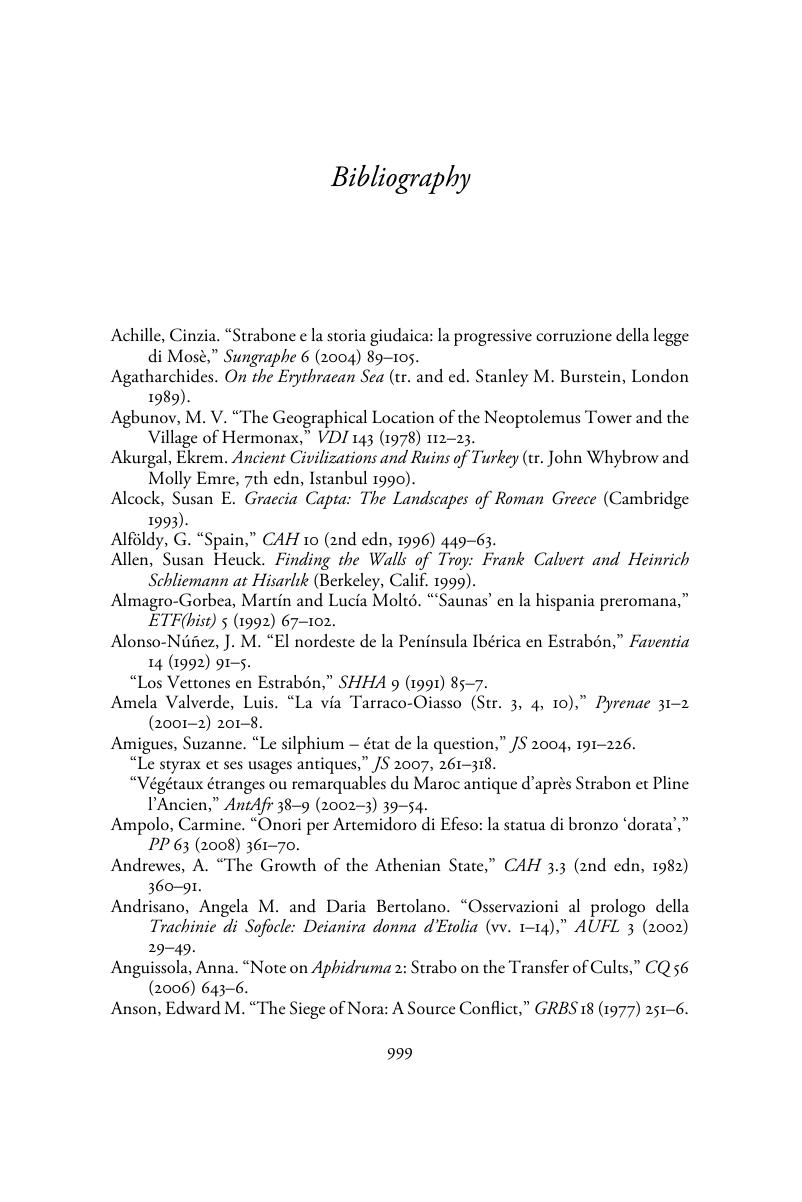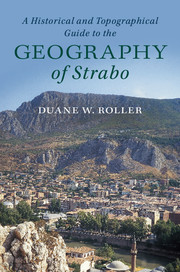Book contents
Bibliography
Published online by Cambridge University Press: 08 February 2018
Summary

- Type
- Chapter
- Information
- A Historical and Topographical Guide to the Geography of Strabo , pp. 999 - 1030Publisher: Cambridge University PressPrint publication year: 2018

